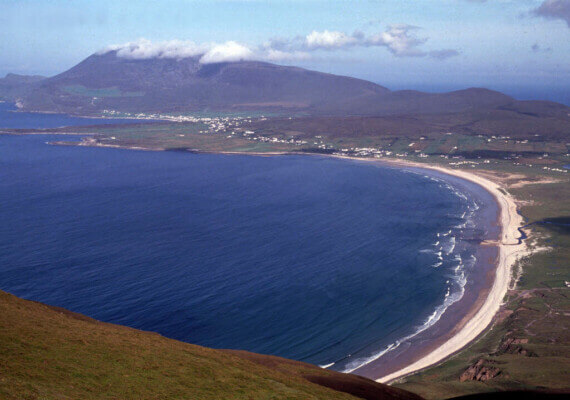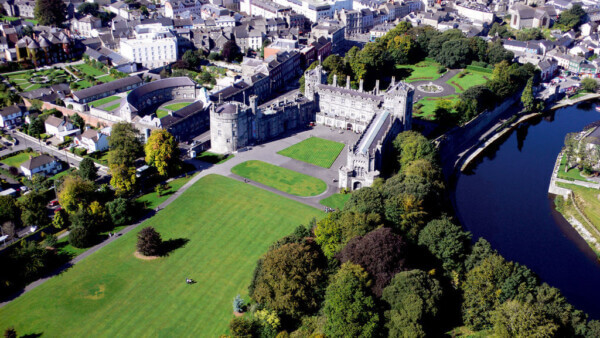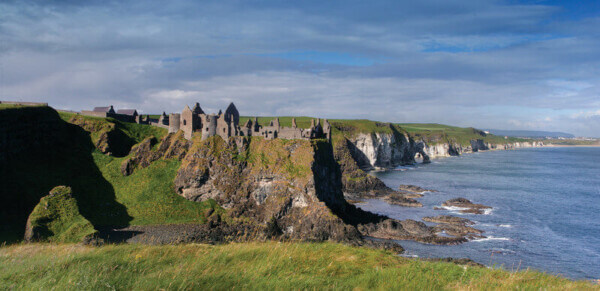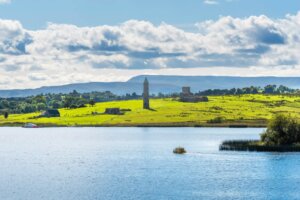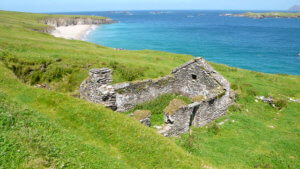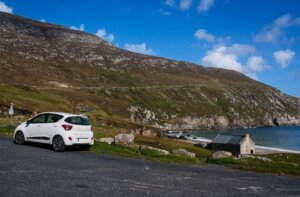If you are thinking of visiting the Emerald Isle, it can seem a bit overwhelming, particularly if you have never been there before.
If that is the case, then this blog post is for you.
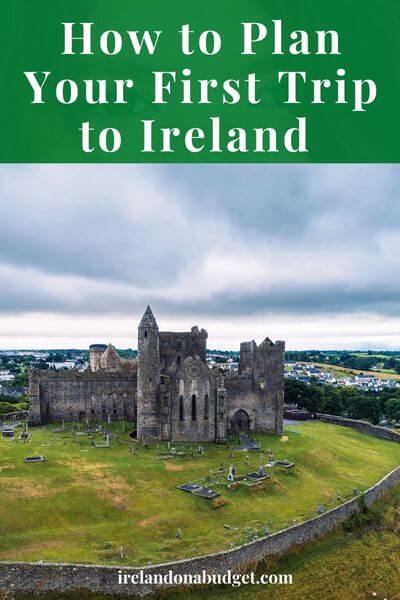 This post and page contain affiliate links and I may earn compensation when you click on the links at no additional cost to you.
This post and page contain affiliate links and I may earn compensation when you click on the links at no additional cost to you.
Choose Where You Want to Visit
Ireland may be small but there’s no way you are going to see it all in one visit unless you plan to stay there for several weeks or months, and of course, most tourists are unable to do that.
While Ireland is full of “must-see” attractions, realistically, if you are only in Ireland for, say, 10 days, you will not see all of them.
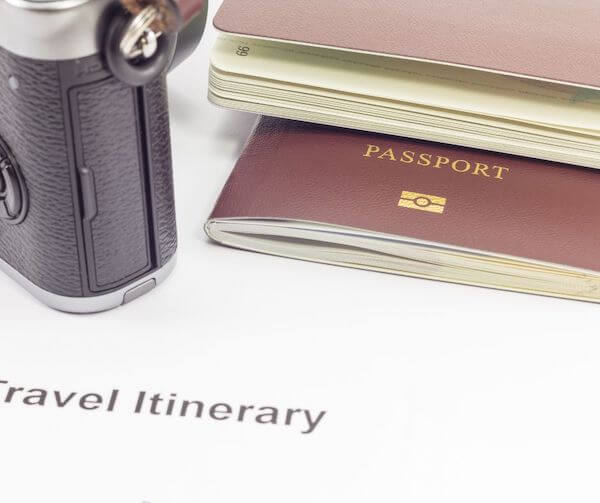
So, my advice is to choose a region of the country that you are simply dying to see and then plan your itinerary around that.
That is the first step in discovering how to plan your first trip to Ireland.
Of course, there are some places, like Dublin, for instance, where you could spend several days.
Again, you need to list the attractions in Dublin you want to see and go from there.
To some degree, the places you will visit in Ireland will be determined by which airport you fly into.

- Book the best tours and guides on Tripadvisor, Viator or GetYourGuide
- Get reliable travel insurance with Travel Insurance Master
- Get the best flight tickets with Aviasales
- Rent a comfortable car via Discovercars
- Find the best accommodation on Booking.com or BandBIreland
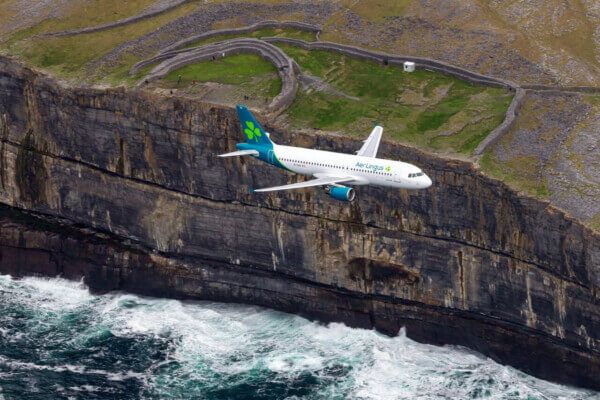
For U.S. visitors and those traveling from Australia and Asia, that will likely mean flying into Dublin and/or Shannon.
For visitors from the U.K. and continental Europe, you have more options, such as landing at any one of Ireland's regional airports.
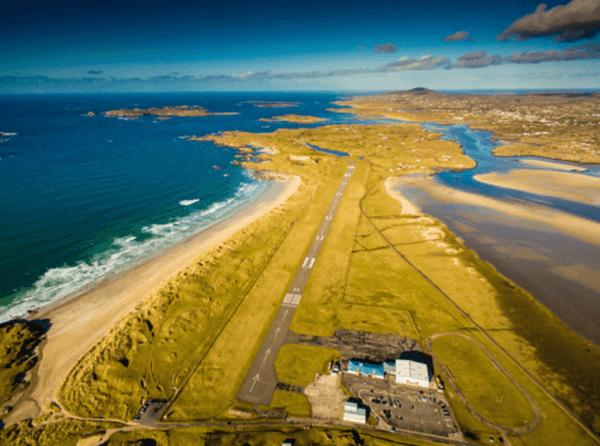
They include Ireland West Airport at Knock; Cork Airport; Kerry Airport; Donegal Airport, in addition to Belfast International Airport in Northern Ireland.
From Dublin, it is quite easy to go to Northern Ireland by driving along the coast and coming back into the Republic of Ireland through Co. Donegal.
If you intend to drive to Northern Ireland, be sure to let your car rental company know as there may be an additional insurance fee involved (remember, Northern Ireland, while on the island of Ireland, is actually part of the UK).
Or, you could drive south from Dublin and take in the beautiful counties of Wicklow, Wexford, Kilkenny, and Waterford.
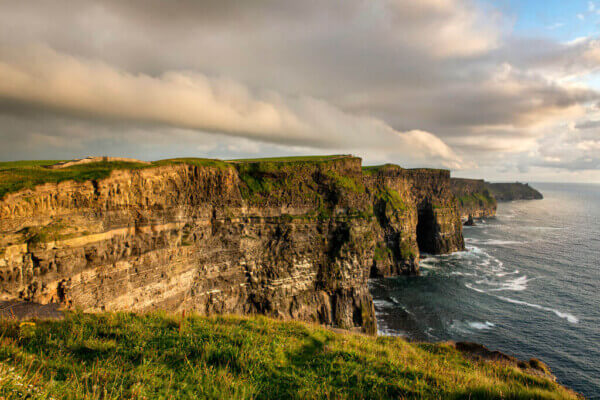
Driving across the country from Dublin and seeing the Ring of Kerry, the Cliffs of Moher, and Galway are all doable.
It all depends on what attractions you want to see in Ireland on your dream trip.
Many tourists to Ireland choose not to drive around Ireland and use its public transportation system to get around.

And that’s ok. You really don’t have to.
There are enough tour companies operating day trips out of Dublin and other major cities in Ireland that will give you a good sense of the country’s attractions outside of its capital city.

Ireland’s public transport system (while admittedly, not as good as what you'll find on mainland Europe), has also improved over the years, so don’t discount this as a way of getting from one end of the country to the other.
Here are some basic itineraries to get you thinking and dreaming and to show you how to plan your first trip to Ireland.
Don’t feel pressure to see everything I’ve included in these itineraries.
They are simply ideas for you to explore as you begin to think about how to plan your first trip to Ireland.
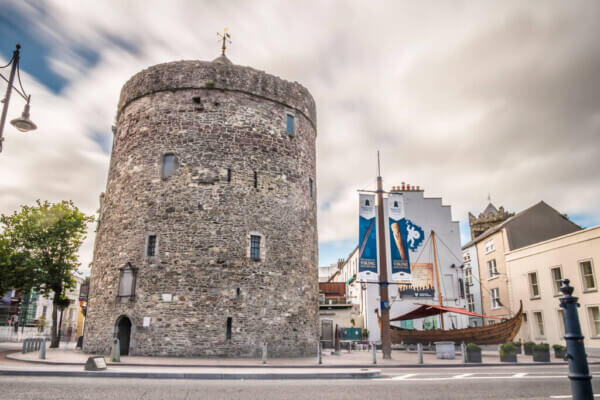
Seven Days in Ireland:
- Day 1: Arrive in Dublin early in the morning, check into your accommodation and do some initial sightseeing, then turn in early for the night.
- Day 2: Spend the next day seeing all of the major attractions or the ones you really want to see. If you prefer to take a tour, check out this page on the city’s top 10 tours.
- Day 3: Head for Wicklow where you can see the beautiful Glendalough Monastic Site and the Powerscourt Estate, and then on to the Medieval town of Kilkenny. Some of the sites to see there include Canice’s Cathedral & Round Tower, the Rothe House & Garden, and Kilkenny Castle, as well as its surrounding parkland (which is free to explore).

An aerial view of Kilkenny Castle, a popular tourist destination in Ireland. Photo: Failte Ireland. - Day 4: Waterford and Cork – stop by Waterford, Ireland’s oldest Viking city, and check out the Viking Triangle. Move on to Cork City, where you can ring the Shandon Bells, visit Cork’s English Market and so much more. If you want to skip the city entirely, you could visit the Cobh Heritage Centre in Cobh, a short train ride away. The center is interesting to many Americans, whose ancestors may have left Cobh (pronounced “Cove”) to make the voyage to America. It also contains an interesting exhibition and visitor experience on its connection with The Titanic.
- Day 5 & 6: The Ring of Kerry.
- Day 7: The Cliffs of Moher in Co. Clare will be your last stop on this whirlwind tour. Before you get there, be sure to stop at Bunratty Castle.
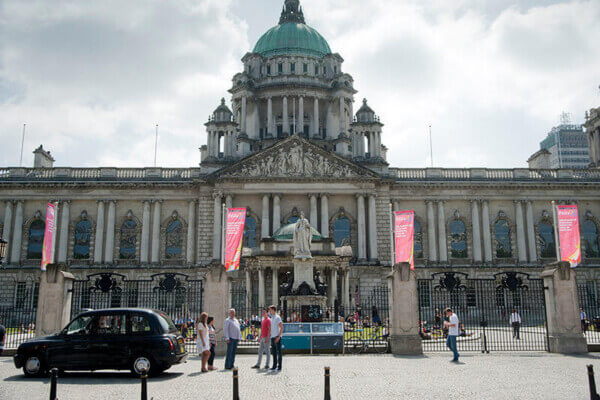
Two Weeks in Ireland:
- Day 1: Arrive in Dublin as noted above.
- Day 2: Spend the full day in Dublin exploring the sites. If you want to explore the areas outside of the city, the DART will take you to Dublin’s most popular coastal communities.
- Day 3 & 4: Head for Belfast on the M1 motorway. The drive is about 2.5 hours. You should get there in time for lunch. Plan on spending the rest of the day sightseeing and the following day, too. There’s a lot to see in Northern Ireland’s capital, including Titanic Belfast, Belfast City Hall, Belfast Castle and so much more.
- Day 5: Drive north along the Causeway Coast, with your final destination being the Giant’s Causeway. While there, check out the Carrick-a-Rede Rope Bridge, which is only a few miles away.

Stunning views from Dunluce Castle. Photo: Tourism Northern Ireland. - Day 6: Pay a visit to the Bushmills Distillery (you’ll get a free drink at the end of the tour!), then to Dunluce Castle, where the scenery is jaw-dropping! Your final destination this day will be Derry (also known as Londonderry).
- Day 7: Spend the day exploring this beautiful walled city. Don’t miss the ancient walls of Derry and take a guided tour of the Bogside as well.
- Day 8 & 9: Explore the wild and beautiful county of Donegal over two days. There’s a lot to see in this corner of Ireland, including Malin Head to the north of the county (the northernmost part of Ireland in fact), Glenveagh National Park, Fanad Lighthouse, and the Sliabh League Cliffs (much higher than the Cliffs of Moher!).
- Day 10: Sligo is Yeats Country, and while it’s much smaller than Donegal, there’s still a lot to pack in here. Don’t forget to visit Yeats’s grave at Drumcliff, take a walking tour of Sligo, maybe even a ghost tour, and climb Knocknarea, where the legendary Queen Maeve is said to be buried upright!

Downpatrick Head in North Mayo along the Wild Atlantic Way. Photo courtesy of Daniel Struk for Getty Images. - Day 11: Drive south to County Mayo. Lots to see and do in this beautiful county, too, including Dun Briste, the large sea stack off Downpatrick Head, the nearby Ceide Fields, with archaeological evidence of prehistoric life, Achill Island, the pretty town of Westport, and so much more.
- Day 12: Driving from Mayo you will naturally find yourself in Co. Galway, Connemara to be exact. Explore the wild beauty of the Connemara National Park and be sure to visit the town of Clifden while you’re in the area.
- Day 13 & 14: Explore Galway and the Aran Islands on the last two days of your two-week trip to Ireland. Galway has much to offer, including interesting attractions like the Galway City Museum, St. Nicholas’ Church, and the Latin Quarter with all of its cool shops and restaurants.

Should You Rent a Car?
This is a question that a lot of people ask themselves before going to Ireland for the first time.
Many are hesitant to do so simply because they’ll need to adjust to driving on the left instead of the right.
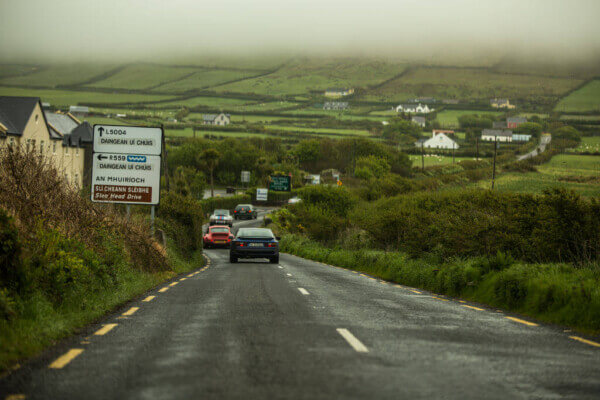
Most people quickly adjust to driving on the left. However, if you’re uncomfortable, it’s best not to do it. As I’ve said previously, public transportation has greatly improved in Ireland and will get you to most places in the country.
If, however, you are up for driving in Ireland, it is really the best way to see the country.

You can go at your own pace and take as long or as little as you want at each destination.
There are a few things to keep in mind when renting a car in Ireland.
- When renting a car in Ireland, you will be asked to purchase CDW (Collision Damage Waiver) insurance, which reduces your personal financial responsibility for damage to any car you rent while in the country.
- You will have a minimum deductible of between $1,500 and $3,000 for any damage that is incurred. CDW does not include damage to tires, windows, or a car’s undercarriage. You can avoid paying for this by using specific credit cards, which covers the cost instead. If you go this route, be sure to get a letter from the credit card company so that you can present it at the car rental desk in Ireland.If you do incur damage while driving in Ireland, the car rental company will process a claim with your credit card company.

Photo: Casper1774 Studio for Getty Images Pro - The deductible is held on your credit card until you return the car. If there are no scratches or any other damage, you’re good to go. Someone from the rental company will inspect the car, however, before you turn it in. If there is damage, you will be held responsible and they will deduct the cost of the repairs from your credit card.
- You could take out what is called Super CDW, which is basically the ultimate car insurance to have while in Ireland. It covers any kind of damage you might get while driving over there, including minor dents and scratches. However, you should look at your rental car terms of the agreement before signing on the dotted line.
Which Accommodation to Choose?
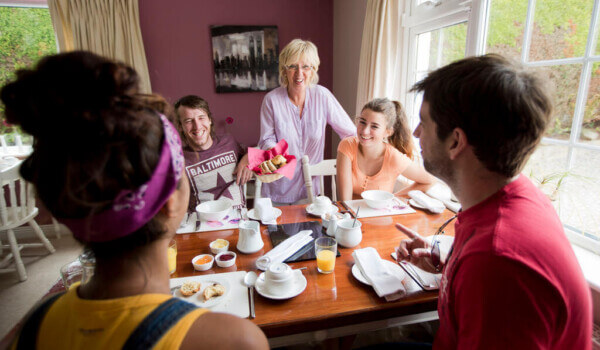
At one time, a B&B was the most popular form of accommodation for the tourist visiting Ireland.
Hotels weren’t as plentiful, except in Ireland’s larger cities, and often they were quite expensive, too.
From B&Bs to hotels, Airbnbs, and holiday homes, not to mention hostels, camping, and glamping sites, Medieval castles, and even lighthouses, there is a lot to choose from when looking for suitable budget accommodation in Ireland.
The type of accommodation you choose depends on what you’re comfortable with.
Airbnb has made a serious dent in the Irish tourist market, making a particular impact in cities like Dublin.
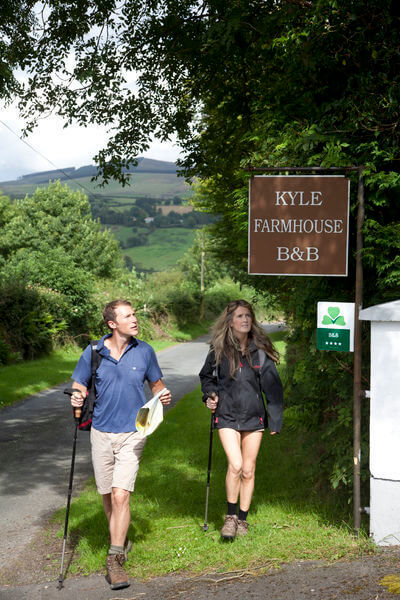
B&Bs have always been a favorite choice for visitors and are still popular. If you are looking to compare both options, you might want to take a look at this blog post.
Many visitors like the fact that they can usually save a significant amount of money on Airbnb as opposed to a hotel in the same region that may cost a lot more.
Others like to have the freedom of cooking for themselves as opposed to relying on meals provided by a hotel.
Before booking an Airbnb, get an idea of the layout of the city or region you’re staying in, and then look for suitable accommodation based on your needs.
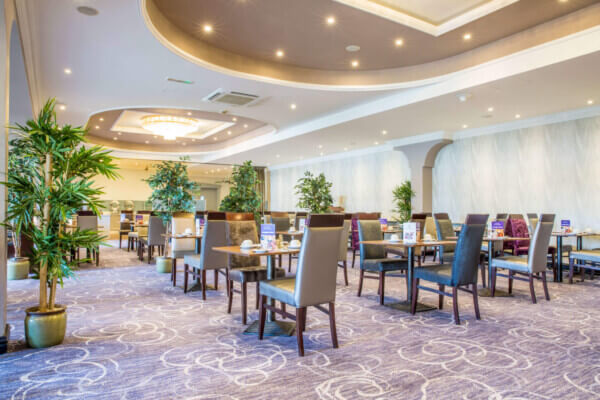
Hotels in Ireland are more plentiful than ever.
In addition, many offer package deals. If you like the additional perks that often come with a hotel stay, such as a pool and a gym, then this type of accommodation is for you.
Click Here for the Best Dublin Hotel Deals!
If you’re planning to stay in one region for more than a few days, I’d suggest that you look into self-catering accommodation.
Vrbo is just one of many companies that can help you find the perfect location for your stay in Ireland.

Hostels are a great choice, especially for millennials traveling to Ireland.
I’ve mentioned the Generator hostel in Dublin before and the Vagabond hostel in Belfast.
Both are quite unlike the hostels of years ago, offering accommodation that is clean, modern, safe, and budget-friendly.
Before You Go
Creating an itinerary is important but before you do that, you should do some research first on how to plan your first trip to Ireland.

That includes using a travel booking site like Skyscanner and going to hotel reservation sites like Hotels.com, Booking.com, or TripAdvisor.
Be flexible with your dates as you’ll have the potential to save more money as a result.
I suggest writing down the attractions you’d most like to see and then creating a daily itinerary based on that. Be flexible. Don’t expect to see everything that’s on your list.
In most cases, it won’t happen, but at least writing it down will help.
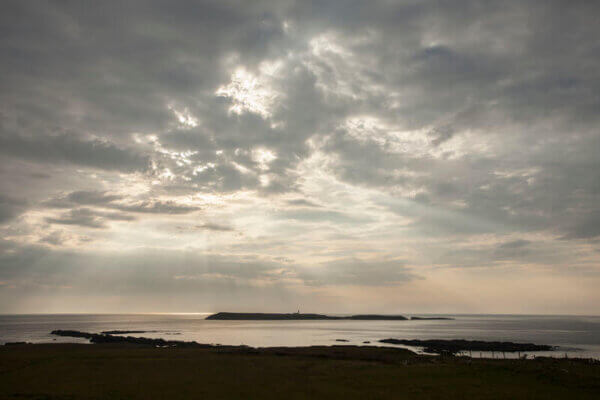
If you’re going for a week, 10 days, or more, pack wisely. Ireland’s climate, even in the summer, can be changeable.
You should always pack a light jacket and of course, comfortable shoes, especially if you plan on walking or hiking a lot.
Check out this blog post on what to pack for your trip to Ireland.

@billionphotos.
Going abroad means you’ll be bringing your electronics with you. That includes cell phones.
If you don’t want to pay the extra fee to your cell phone provider for international coverage, I suggest you turn off your data once you arrive in Ireland and then use WIFI only when it’s available and free.
Most cafes and pubs in Ireland provide free WIFI. You’ll need to ask for the password beforehand.
WIFI on public transportation is also widely available. That includes Ireland’s airports, train stations, and buses and trains.
If you choose to rent a car, you could pay extra for an in-built GPS system. However, when I travel to Ireland, I always rely on a free app called Navmii.
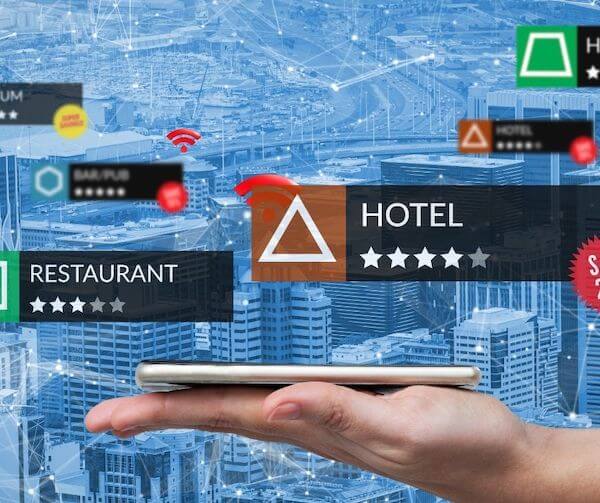
It will give you voice directions without a data connection. Download your map when you do have a free WIFI connection. Once you’re on your journey, call up the map again and you’re set to go.
Google Maps and Here WeGo also work well. Both are free.
If you have a phone that can accommodate an eSim, Airalo has affordable Wifi plans for various countries around the world, including Ireland. You could then easily use Google Maps and/or Waze to find your way around Ireland while driving.
Eating Out in Ireland
Eating out in Ireland doesn't have to be overly expensive. While there are expensive restaurants to choose from in every big town and city across the country, if you do a little research beforehand, you can get some pretty decent bargains.
While Ireland is known for its lively pub culture, you’ll find more than alcohol in many of them.
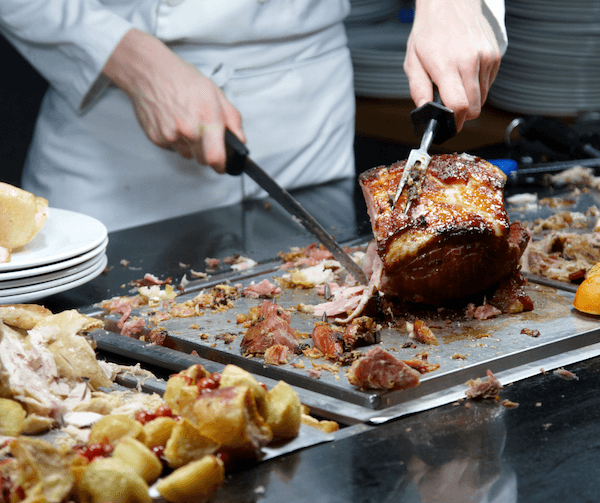
Many pubs serve three- and four-course carvery meals, which include cooked meat, along with vegetables, potatoes, and other sides, all for a fixed price.
If you’re traveling with a family, this is a good deal, and it will keep you going for hours. Dessert is often included, too.
The food in Ireland today is varied, with much of it coming from local artisans and producers. There are numerous food tours all across the country, the most popular ones being in Dublin, Cork, and Galway.
Are you in the process of learning how to plan your first trip to Ireland? Let me know in the comments below.

